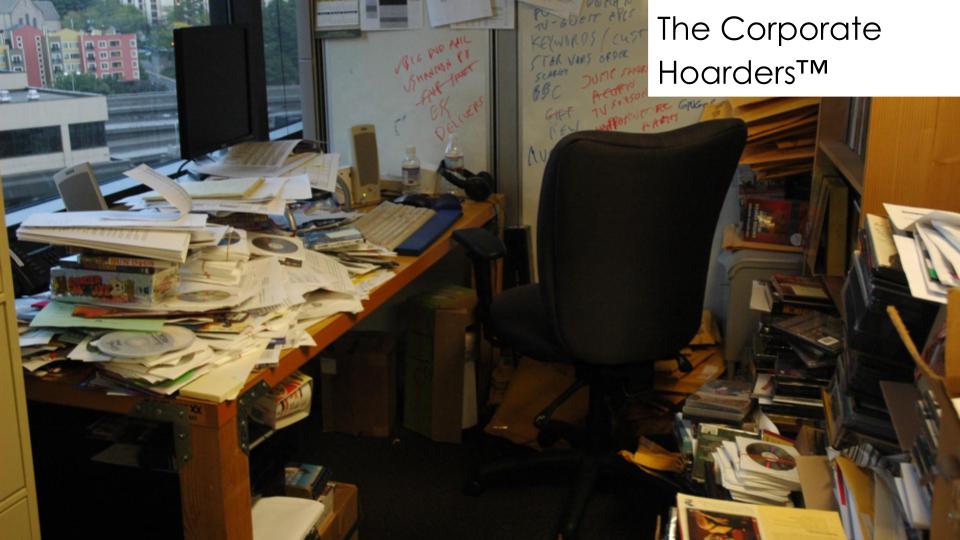Many companies are still using software built or purchased from a time when Blockbuster were fining us for late returned videos.
Most of the companies we admire for their innovation , your Amazons, your Netflixes or your Apples have no such legacy ways of working holding them back. They either cleared them out years ago or never had them in the first place.
It’s often difficult to have an ambitious organisational clear out – as standardisation and minimalism isn’t seen as very exciting, or innovative. It can be expensive too, just like renovating an old house, and you can understand why many put it off, or choose not to bother.
Last week I was talking about this with David Anderton the Transformation and ICT Director at Bromford.
It was David who identified the requirement for the Bromford Design Principles as well as the need to have a clear out of what was a 50+ year old organisational infrastructure that was disconnected and messy.
The problems we were set up to solve were once relatively simple, but as organisations get larger there’s more technology, more people, more regulation. We put together processes, controls, reviews, and structures and these factors together create a great amount of complexity.
Unravelling this – at the same time as keeping business running as usual – is no easy task.
- Some of us simply don’t like letting go of the working practices we have become used to.
- Some of us don’t see the need for connectivity and interoperability beyond our own functional silo
- Some of us become overly attached to the tools we use to do our jobs despite them being well past their sell by date (In the same way as I can’t get my Dad to move past a Nokia 3210 – “It still does the job, son”)
According to David there are five factors hindering effective transformation:
- inertia
- risk aversion
- lack of investment in operating models
- an overinflated sense of delivery excellence
- too much celebration of mediocrity
Additionally many organisations have become afflicted by a kind of hoarding disorder. This disorder means the organisation acquires an excessive number of policies, systems and structures and stores them in a chaotic manner, resulting in unmanageable amounts of clutter. This clutter isn’t just an aesthetic problem. In an era reliant on the instant transfer of information and data it hoards knowledge and makes it inaccessible rather than opening it up.
This is why the replacement of legacy systems is the modernisation headache, because it’s not an IT issue, it’s all about organisational behaviour.
One of the reasons people can be resistant to change is because – from their perspective – it doesn’t add any value. The case for a simpler operating model is often hard to see from a siloed perspective.
However, standardised and simplified operating models are the bedrock of innovation – as you can’t make a leap forward when you’re disorganised and disconnected.
And that’s what we’ve been trying to do.
- A new operating model based on services
- Designed from ground upwards
- Focused on services required for strategy
- Then build out a transformation journey with enabling technology
The problem is you can’t achieve this simplicity without a lot of hard work and some resistance.
The innovative companies we all admire have done this hard , boring , work years ago. Which is why they can experiment with AI and VR – they’ve built future ready platforms to which tech innovations can be seamlessly integrated.
Our old model organisations thrive on complexity. Many of the problems we set to solve are indeed complex, but that complexity doesn’t need to be mirrored internally.
Simplicity means saying no to things and doing less. Many of an organization’s activities are misaligned from , or have poorly defined, strategic objectives. We often anchor around the wrong thing. That’s why some big institutions have no chance – they are hit by random plans and transformations rather than anchoring around purpose.
This takes discipline though as it means killing vanity projects and saying no when something doesn’t fit into the plan.
 Doing more stuff gets people noticed and promoted.
Doing more stuff gets people noticed and promoted.
Doing less stuff – but the right stuff is what we should now recognise and reward.
Consistency of operating model, clean data and standardization aren’t sexy. But every one of the innovative organisations we admire has been through the pain of achieving that.
A future ready operating model eliminates corporate hoarding and replaces it with an agile framework that companies can adapt and morph on an ongoing basis,
They match the speed of today’s change and run with it, rather than constantly trying to catch up.
You can get the full set of the Bromford Design Principles here
Cover photo by Wonderlane on Unsplash

Leave a reply to Paul Taylor Cancel reply